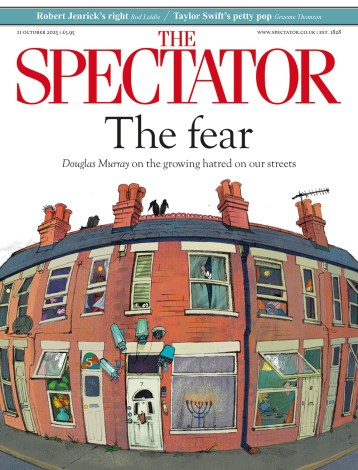Sir Henry Raeburn’s exquisite nineteenth-century portrait of Sir Walter Scott hangs — magisterial, but unfamiliar — in an ordered sea of Scottish portraits, of Scottish subjects, in the renascent Scottish National Portrait Gallery. As the stock picture question of University Challenge well attests, putting a face to a famous name, especially that of a writer like Scott, is no easy feat. Having succeeded, there’s always something satisfying about staring into the eyes of an illustrious figure formerly visualized in the mind’s eye alone. The Edinburgh gallery provides well for innate curiosity, making familiar the unknown faces behind great novels, philosophical tracts, paintings by those more accustomed to residing on the other side of the canvas. But it plays too fast and loose with the word ‘portrait’ for this to be its defining achievement.
There are plenty of portraits here, but plenty of Scottish landscapes, seascapes, glassware besides. Unlike London’s National Portrait Gallery it depends upon the looser, literary reading of ‘portrait’ — more Portrait of a Lady than Picture of Dorian Gray. It offers, specifically, a ‘Portrait of the Nation’ of Scotland, as woven out of both a chronological and thematic route through 17 galleries spanning the Reformation to the modern day. One minute you’re getting animated about whether portraits of modern celebrities branded ‘Hot Scots’ have truly earned such a precious sobriquet, the next you’re plunged into a rude awakening of how trivial it has all become as you gaze meekly at Robert Burns or David Hume.
Literature literally pervades to the gallery’s core, where a magnificent library full of death masks, miniatures, and a kitsch ceramic study of Baroness Helena Kennedy nestle among more weighty busts of old and shelves of delectable tomes.
Elsewhere in the historical galleries, too, it is principally as writers, if not queens or nobility, that women make an appearance. Author and poet Naomi Mitchison is captured head in hand and in a strop as she struggles to complete her historical novel The Blood of the Martyrs in a portrait by Wyndham Lewis. Typical of its time, the portrait’s angular style and insipid palette make for a cold, unfeminine scene. Around this date the Polish artist Tamara de Lempicka was drafting equally jaunty but overtly sexy females. Compared to these, the figure Mitchison cuts in Wyndham Lewis’ portrait, swamped as she is by an outsize smock through which her biceps alone protrude, looks all the more masculine. You get the impression from other portraits, too, that for all women at and prior to this time could find a voice through their literature, there was ever ready a male gaze waiting to subvert it.
The Scottish National Portrait Gallery is today the kind of space in which you’d imagine Basil Hallward would once happily have hanged his portrait of Dorian Gray — drafty, uncramped, bathed in light let in through vast skylights and along its echoing Victorian halls. The artistic studies it contains of Scottish writers, poets, and philosophers underpin its broader fascination with the vicissitudes of fame which, in part, characterise the nation’s social history. Caught between faces you know and those you do not, the compulsion is to recast our vision of celebrity, before coming to realise that these authors of yesterday rarely ever achieved the widespread visual recognition afforded by today’s display. A portrait gallery may be a somewhat artificial means of evoking a history, but when it’s as elegantly stocked, thought-provoking, and genre-bending as this one, its aesthetic and social value can hardly be denied.
The Scottish National Portrait Gallery, Edinburgh, opens to the public on 1 December.





Comments